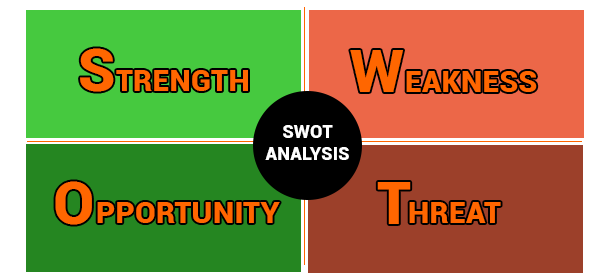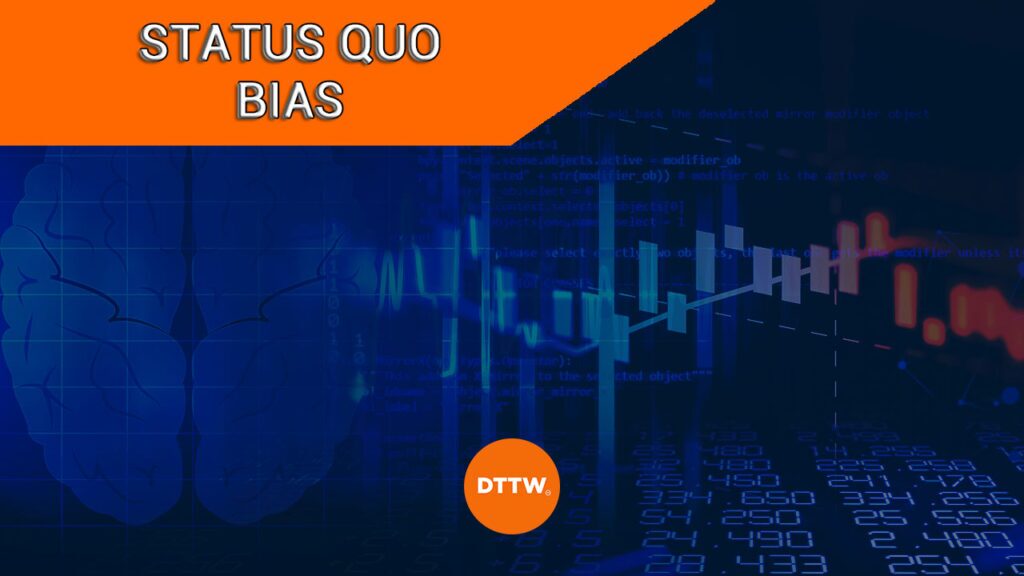Psychology is an important concept in trading and investment. An expert technical and fundamental analyst who does not focus on his emotions will often lose money.
But emotions are not the only thing a trader has to manage; as we have already seen, certain biases (personal inclinations) can affect our trades.
In this article, we will focus on an important psychological concept known as status quo bias and how it affects your trading outcome.
Table of Contents
What is status quo bias?
Status quo bias is an important concept found in psychology. It refers to a situation where people prefer things stay the same other than change. In most cases, people who have a status quo bias tend to have fear that change will have a bad or negative outcome.
For example, an automaker that focuses on combustion engine like Toyota could have a status quo bias by avoiding investing in electric vehicles. Similarly, a company that has succeeded in operating a certain way can fear changing their strategy.
A good example is companies that are considering 4-day work-weeks. Most companies believe that this is a bad strategy because the five-hour work week has worked well for them.
Status quo is a psychological concept that works across all industries. For example, in education, schools can prefer to teach a certain way that has worked well over the years. In manufacturing, companies might avoid testing new ideas.
Status quo bias is best explained using the popular saying:
if it is not broken, why fix it?
Example of status quo bias in finance
A good example of status quo bias is Warren Buffett. For decades, he has invested heavily in value companies that have a lot of cash flow and profitability. In this period, he avoided investing in growth technology companies like Apple and Amazon.
He then invested in Apple in 2016. While the investment has made him a lot of money since then, he missed most of the gains that happened in the past few decades.
Related » Optimism and pessimism bias explained
Status quo in trading and investment
Status quo also happens in day trading and investments. While this may not be a too big problem for a long-term investor, this can be highly harmful for a day trader.
Let us look at the most common ways in which this bias manifests itself.
Status quo on assets to trade
One way in which status quo bias happens is on the assets that people trade or invest in. As you possibly know, there are many types of assets in the financial market, including stocks, currencies, commodities, exchange-traded funds (ETFs), and cryptocurrencies among others.
Underneath these categories, there are other types of assets.
In currencies, there are forex majors and minors while in stocks, there are groups like growth and value or technology and consumer staples.
Therefore, some traders can have the status quo bias of trading in a certain asset and be afraid of delving to other assets. They fear that these changes will have a negative outcome on their performance.
This Bias also has good synergy-and thus can be even more insidious-with the halo effect.
Status quo bias on trading strategy
The other way in which this status quo bias works is on the trading strategy. It refers to a situation where a trader is afraid of changing their trading approach. They fear that changing an approach will likely lead to substantial losses.
But what if their strategy is already bringing losses? Bias can have an effect here as well, preventing the trader from optimizing his strategy.
The solution to bypass this problem is quite simple. Through the help of a demo platform, you can test your strategies with historical data and see how they would have performed in certain situations.
You cannot have 100% confidence (that is impossible), but it is a great starting point to know whether a new strategy can be effective or not.
Our partners can also take advantage of our proprietary demo platform to test their strategies (or improve their skills), the TMS™.
Status quo bias on time
Another way in which status quo bias works is on time. For example, some traders have succeeded in trading in certain times of the day. Some have achieved success trading during the morning hours while others struggle trading in the evening.
In these cases, these traders might struggle to adopt to new trading hours. However, it is true that certain hours, such as the first and last, generally offer the greatest opportunities to generate profits.
Triggers of status quo bias
There are several main triggers of status quo bias when trading and investing. Let us analyze the most common ones.
Loss aversion
An important concept in decision-making is that people tend to fear their potential loss instead of their gain. For example, if you had to place $1,000 on a bet, you will often be thinking of how you will lose this money instead of the potential gain.
Similarly, in status quo bias, traders will often think about the potential losses instead of what they could change. Loss aversion is also another bias you can fall into.
Sunk costs
In most periods, traders have already spent a lot of time, and often money, in a certain strategy. For example, they have spent many years trading different assets using various strategies.
Therefore, the sunk cost factor refers to a situation where they fear that change will be costly. Instead of wasting more time on a new strategy, why not focus on what has worked?
Exposure
This is an important concept that means that people prefer things that they have been accustomed to instead of changes.
Often, we are all exposed to status quo other than the new change. This explains why many veteran investors and traders avoided crypto since they were exposed to traditional assets.
How status quo bias affects traders
Status quo bias has some negative implications to day traders. A good example of this is Warren Buffett, who focuses on value stocks. By so-doing and ignoring growth companies, he missed the opportunity of investing in quality companies like Google, Facebook, and PayPal.
As such, while he has performed well over the years, he lost the opportunity of gaining more money in thse companies.
Status quo bias has some severe consequences to traders, including:
- Failure to adapt to new conditions – For example, a trader can fail to adapt to new conditions like highly volatile ones.
- Miss a lot of chances – By staying fixed in one idea, you will miss a lot of chances that come up in the market. The example of Warren Buffett is a good one to look at.
- Fall into trading traps – At times, status quo can lead to traps like being overconfidence.
How to overcome status bias
Okay, perhaps by this time, you may be a little afraid of falling victim to this bias as well. Fortunately, there are several approaches to help you overcome it, in addition to the previously mentioned demo platform.
SWOT analysis
One useful concept is to embrace the SWOT analysis. SWOT is a strategy that looks at the strength, weakness, opportunity, and threat of the new strategy or asset.
Taking time to do the analysis will help you become more successful.

Set a small fund for trials
Further, you can avoid status quo bias by focusing on your main strategy and creating a small fund for trying new ideas.
For example, if you have a $100,000 account, you can set aside $5,000 of it to trade new assets using new strategies.
You might object that it doesn’t make sense to allocate some funds when you can rely on the demo platform, right? Well..there are some gaps between trading in a protected environment, without risking money, and doing it live.
And, sooner or later, you will have to check whether this new strategy brings profits or is wrong, right?
Discuss with other professionals
You can solve this bias by talking to your mentor or other team members. These discussions will help to shape your trading approach.
If you don’t have a mentor, or don’t work in a team, you could always seek advice in forums, social media (reddit has numerous communities to join) or platforms such as Discord.
Summary
We have realized that status quo bias is one of the worst that could affect our trades; choosing not to ever change in an ever-changing environment like the stock market can cost us numerous -and huge -losses.
Luckily this is an easy bias to recognize, and you can get around it safely by adopting some of the solutions we have seen.





